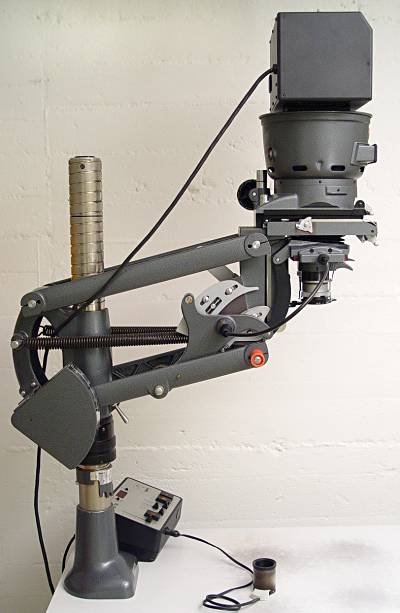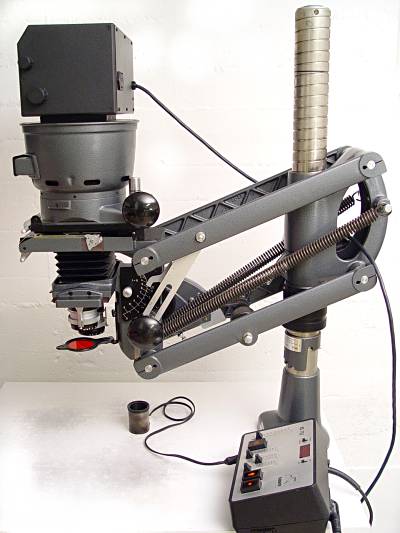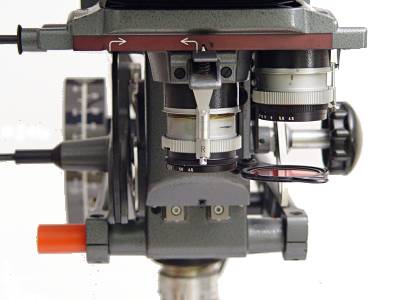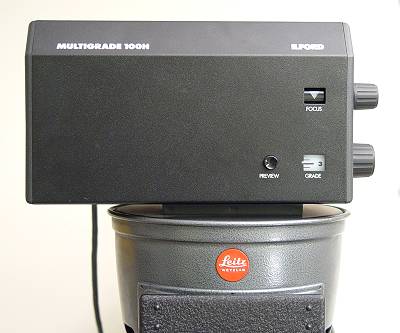|
Yes, I still have an enlarger. And I use it. Digital imaging, I admit, is very convenient in many respects, Particularly if you present your images on the web. But, and thats the decisive argument - nothing beats a well made large vintage black-and-white print on good baryte paper. I used to own a couple of different enlargers (I started with a Durst M 305, later I had a Kaiser 6001), all of which I used for b&w work. I never did color, simply because it is too much work. I was happy with them until I had the chance to loot a Leitz Focomat, which definitely beats everthing else. I sold all the other stuff and today I exclusively use my gorgeous 2c. The outer appearance of the Focomat 2c is completely different from that of most other enlargers. This is due to the use of a mechanical autofocus system, which was introduced with the very archaic Focomat 1 and continued until the modern Focomat V35. Some salient features of the Focomat 2c are
The mechanical autofocus system works via two focusing cams on a parallellogram giude. The extraction of the lens bellows, that is the distance of the objective lens to the negative, is automatically adjusted to the actual height of the enlarger head. (Figs 1 and 2 on the right). The correct distance is adjusted via a roller running on a properly shaped cam as shown in Fig 4. Two different objective lenses can be used. A 60 mm Focotar and a 100 V-Elmar (Fig 5) are provided for this enlarger. The focusing cams are adjusted for these focal lengths. The lenses are mounted on a sledge which can shifted sidewards for a quick exchange of the objective lens. Both lenses have large enough imaging circles to be used for negatives up to 6x9. When the lens is changed, automatically the corresponding cam is used for the focusing mechanism. The lens sledge and the wheel mechanism are coupled via the bowden cable connection seen in Figs 1, 3 and 4. The negative stage is very large and convenient to use. There are stages for 35 mm film (the full negative is shown, and there is a little red window showing the negative number) and for larger formats. The latter have a large 6x9 glass window and slide-in masks for differen formats. Masks (Fig.6) for 35mm, 6x6, 6x7, and 6x9 are sold by Leitz, but you can also cut you own masks from cardboard or thin metal sheet (e.g. for panoramic negatives). The Focomat was originally sold with a bulb head for ordinary condensor illumination. My exemplar is equipped with an Ilford 100H multigrade head (Fig 7). This diffusor illuminator is awfully convenient if you work with multigrade papers - a highly recommended improvement of the Focomat. Leitz also sold an exposure timer for the Focomat. I use the Bäuerle copy with integrated light meter unit (Fig 8). This is a very practical steering unit albeit the precision of the clock is not particularly jutting. The bottom line: A great user instrument. If you can get one - buy it! |
|







